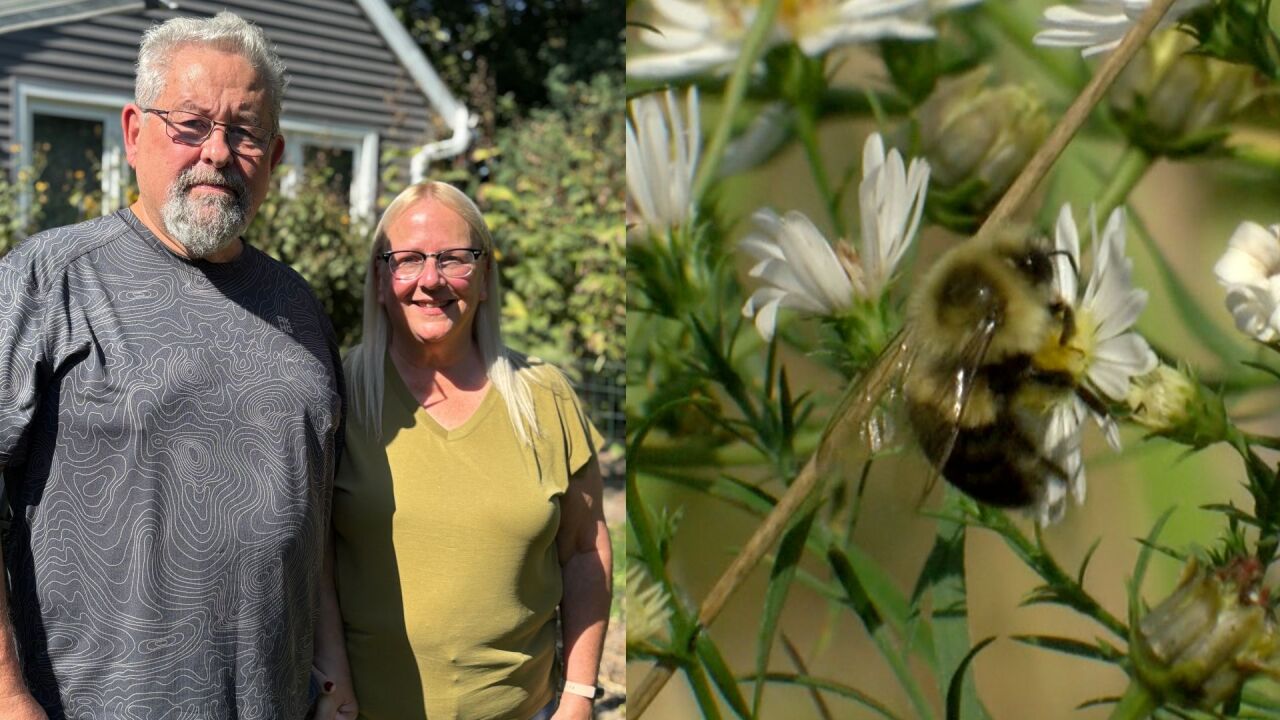NEW BERLIN, Wis. – Dennis and Diane Reynolds have turned their New Berlin yard into a natural garden for Wisconsin's native bees, including bumblebees, as the state’s native bee population faces severe decline.
The retired couple's passion for bees sparked last year when they completed bumblebee ambassador training at the Wehr Nature Center in Franklin.
"I always loved the outdoors. I used to be a hunter and I took up this," Dennis Reynolds said.

But their focus isn't on honeybees — it's on Wisconsin's native species that desperately need help.
"One of the trainers said that a bumblebee is like the canary in a mine. When we start losing those bumblebees, we're losing the natural native plants," Dennis Reynolds said.
Watch: New Berlin couple transforms yard into native bee sanctuary
Honeybees are great for monocultures of agriculture, since you can move honeybees across states to pollinate whatever crop is currently blooming. However, they are different from native bees, according to Wisconsin DNR Bumble Bee Brigade Coordinator Elizabeth Braatz.
The Wisconsin DNR is focused on conserving Wisconsin's native bee population.
"Honeybees have the best PR agents ever. My mind is focused on our native bees, because they're the ones that need our help," said Brooke Gilley, a park naturalist at Wehr Nature Center.

The native bee population in Wisconsin is severely declining. Gilley says there are about 4,000 native bee species in North America, and one out of four of them are imperiled with the risk of extinction due to lack of native plants, use of pesticides and other factors.
"We also have to realize that native bees were here prior to colonization, and they are still really good pollinators," Gilley said.
To keep native bees buzzing and pollinating, more native plants need to be grown.
"People often think the outdoors is far away. However, you can create environments, or people can create environments for others to enjoy, just even in urban areas," Diane Reynolds said.
The Reynolds have started outreach events of their own with the hope that others find an appreciation for these small workers.
"We can all coexist together," Diane Reynolds said.
Anyone interested in volunteering for the Bumble Bee Brigade can find more information on its website. More keystone plants can be found on the Homegrown National Park website.
Editor's Note: This story previously misstated the status of native bee species in North America. Gilley says about 4,000 native bee species exist, and one in four are imperiled with the risk of extinction—not officially endangered—due to lack of native plants, pesticide use, and other factors.
It’s about time to watch on your time. Stream local news and weather 24/7 by searching for “TMJ4” on your device.
Available for download on Roku, Apple TV, Amazon Fire TV, and more.






